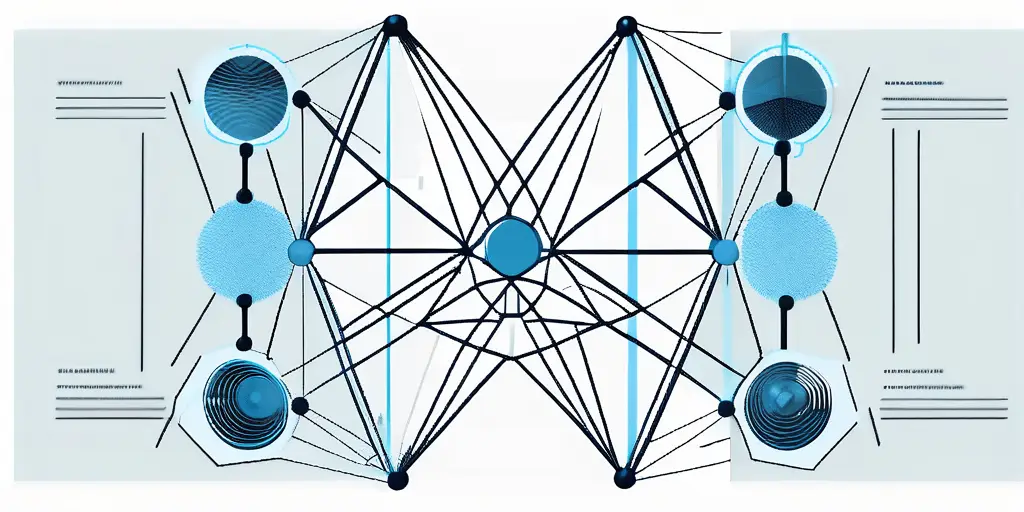The PRISM program is a hot topic in today’s digital age. It has sparked debates and raised questions about privacy, national security, and the ethical implications of mass surveillance. In this article, we will delve into the depths of the PRISM program to give you a comprehensive understanding of its origin, purpose, controversies, and so much more. So, buckle up and get ready to explore the multifaceted world of PRISM!
Understanding the PRISM Program
Origin and Purpose of PRISM
Let’s start at the beginning. The PRISM program, officially known as Planning Tool for Resource Integration, Synchronization, and Management, was established by the United States National Security Agency (NSA). Its primary purpose? Combating terrorism.
Originating in the aftermath of the September 11 attacks, PRISM was developed to collect intelligence from various sources, including internet communications and digital platforms, to identify potential threats to national security.
Delving further into the genesis of PRISM, it’s crucial to note that the program operates under Section 702 of the Foreign Intelligence Surveillance Act (FISA). This legal framework allows the NSA to target non-U.S. persons reasonably believed to be located outside the United States, intending to acquire foreign intelligence information.
Key Features of the PRISM Program
Now that we know its roots, let’s explore the PRISM program’s key features. One notable aspect is collecting a vast amount of data from tech companies such as Google, Microsoft, and Facebook.
This data includes emails, chats, photos, videos, and other digital content. Through PRISM, the NSA has access to an unprecedented wealth of information, allowing them to analyze and draw connections between individuals and potentially thwart terrorist activities.
It’s important to highlight that PRISM operates under strict guidelines and oversight from the Foreign Intelligence Surveillance Court (FISC). This judicial body reviews and approves the targeting and minimization procedures employed by the NSA to ensure that individuals’ privacy rights are protected to the extent possible while still allowing for effective counterterrorism efforts.
The Role of PRISM in National Security
PRISM’s Contribution to Counterterrorism
PRISM plays a crucial role in national security and the fight against terrorism. By monitoring and analyzing digital communications, the program aims to identify and disrupt potential threats before they materialize.
Information gathered through PRISM has reportedly led to the prevention of numerous attacks, saving lives and safeguarding the nation against acts of terror.
PRISM’s sophisticated algorithms and data analysis techniques allow intelligence agencies to uncover hidden patterns and connections within vast amounts of information. This capability enables them to anticipate and respond to emerging threats swiftly and effectively, enhancing the nation’s overall security posture.
Controversies Surrounding PRISM’s Role
However, PRISM’s role in national security is not without controversy. Critics argue that mass surveillance infringes upon privacy rights and undermines civil liberties. They question whether the ends justify the means and debate the necessity of such comprehensive data collection.
PRISM’s revelations have ignited a global conversation about the balance between national security and personal privacy, forcing governments to address public concerns and reevaluate surveillance practices.
The transparency and oversight of PRISM’s operations have come under scrutiny, with calls for increased accountability and checks on the program’s power. Balancing the imperatives of security and individual freedoms remains a complex and ongoing challenge for policymakers and intelligence agencies.
The Technology Behind PRISM
Data Collection and Analysis
So, how does PRISM collect and analyze all this data? The program relies on various technological capabilities, including data mining, pattern recognition, and advanced algorithms.

PRISM sifts through the vast ocean of digital information through sophisticated methods, searching for patterns, connections, and potential threats. It’s like searching for a needle in a haystack, but with the help of technology, the needle becomes more discoverable.
PRISM utilizes cutting-edge machine learning algorithms to continuously improve its data analysis capabilities. By learning from past behaviors and trends, the program can adapt and enhance its ability to identify suspicious activities or potential security risks. This iterative refinement process ensures that PRISM remains at the forefront of data analysis technology, constantly evolving to meet the challenges of a rapidly changing digital landscape.
Security Measures and Encryption
Security is paramount when dealing with sensitive information, and PRISM doesn’t take it lightly. The program employs robust encryption methods to protect data during collection, storage, and analysis.
Encryption ensures that only authorized personnel can access and decipher the collected data. However, concerns have been raised about potential misuse or unauthorized access, highlighting the need for strict oversight and accountability.
In addition to encryption, PRISM implements multi-factor authentication protocols to ensure that only authorized users with the necessary credentials can access the system. This extra layer of security helps prevent unauthorized access and strengthens the overall integrity of the data collection and analysis process. By combining encryption with stringent authentication measures, PRISM establishes a comprehensive security framework that safeguards sensitive information from potential threats and breaches.
Legal and Ethical Implications of PRISM
Privacy Concerns and Legal Challenges
With great power comes great responsibility, but when it comes to the PRISM program, some question whether the balance has been tipped too far. Privacy advocates argue that mass surveillance violates individuals’ right to privacy, a notion protected by many democratic societies.

Legal challenges have emerged, raising questions about the legality of PRISM’s activities and the level of transparency and oversight in place. As a result, courts and policymakers are navigating the complex intersection of national security and privacy rights.
The debate around PRISM has sparked discussions about the implications of data collection on a global scale. The interconnected nature of the digital world means that surveillance activities can have far-reaching consequences beyond national borders, leading to diplomatic tensions and international legal disputes.
Ethical Debate Surrounding Mass Surveillance
The ethical implications of mass surveillance are equally significant. Critics argue that PRISM’s panoptic nature erodes trust, fosters a culture of suspicion, and potentially stifles free expression.
The ethical considerations extend to the role of technology companies in facilitating government surveillance. Tech giants face scrutiny for cooperating with intelligence agencies, raising questions about corporate responsibility and the boundaries between public safety and individual privacy.
People wonder: should we sacrifice privacy to maintain security? Is there a way to strike a balance that respects both individual rights and the collective safety of a nation? The answers to these questions continue to provoke intense discussion and debate.
The Future of PRISM
Potential Developments and Improvements
As technology advances and the digital landscape evolves, so does the PRISM program’s future. We can expect continuous developments and improvements in data collection, analysis, and security measures.

Efforts will likely be made to strike a delicate balance between national security interests and individual privacy rights, ensuring that safeguards and regulations keep pace with the ever-changing landscape of modern communication.
One potential development in PRISM’s future is the integration of artificial intelligence (AI) and machine learning algorithms. These technologies could enhance the program’s ability to sift through vast amounts of data, identifying patterns and potential threats with greater efficiency and accuracy. By leveraging AI, PRISM could become even more effective in its mission to detect and prevent acts of terrorism and other national security risks.
Advancements in encryption techniques and secure communication protocols will play a crucial role in the future of PRISM. As technology evolves, so do the methods employed by those seeking to evade surveillance. To avoid these challenges, PRISM must continually adapt and improve its encryption capabilities, ensuring that the data it collects remains secure and protected.
PRISM in a Post-Privacy Era
What does the future hold for PRISM in a world where privacy seems increasingly scarce? This question looms as we grapple with the complexities of a post-privacy era.
Technological advancements may challenge the effectiveness and viability of the PRISM program, requiring policymakers and intelligence agencies to adapt their strategies. The ongoing dialogue surrounding privacy, security, and ethics will undoubtedly shape the future landscape of PRISM.
In this post-privacy era, concerns about the misuse of personal data and the erosion of privacy rights are at the forefront of public discourse. As a result, the future of PRISM may involve increased transparency and accountability. Stricter regulations and oversight mechanisms could be implemented to ensure the program operates within legal boundaries and respects individual privacy rights.
Additionally, the future of PRISM may see a greater emphasis on collaboration and information sharing between intelligence agencies and technology companies. These entities can develop innovative solutions addressing security concerns and privacy considerations by working together. This collaborative approach could help foster a more balanced and nuanced approach to surveillance in the digital age.
As we wrap up this overview of the PRISM program, it is clear that this controversial intelligence program has far-reaching implications for our society. It poses challenging questions about privacy, national security, and the role of technology in our lives. Whether you view PRISM as a necessary tool for safeguarding national security or an infringement on civil liberties, one thing is certain: the PRISM program will continue to shape the conversation and provoke debate for years.
As the digital landscape evolves and the complexities of programs like PRISM come to light, the importance of robust cybersecurity measures has never been more evident. With its unparalleled expertise and veteran-owned dedication, Blue Goat Cyber stands ready to navigate these challenges alongside you. Our comprehensive suite of B2B cybersecurity services, including medical device protection, penetration testing, and compliance with HIPAA and FDA standards, ensures your business is fortified against the ever-present threat of cyber intrusions. Don’t let the intricacies of cyber surveillance and data protection overwhelm you. Contact us today for cybersecurity help, and let Blue Goat Cyber be your partner in securing a resilient digital future.
